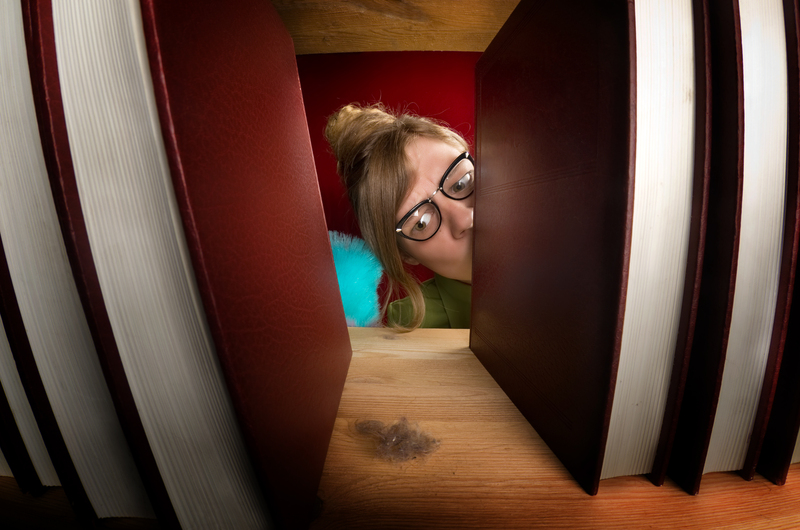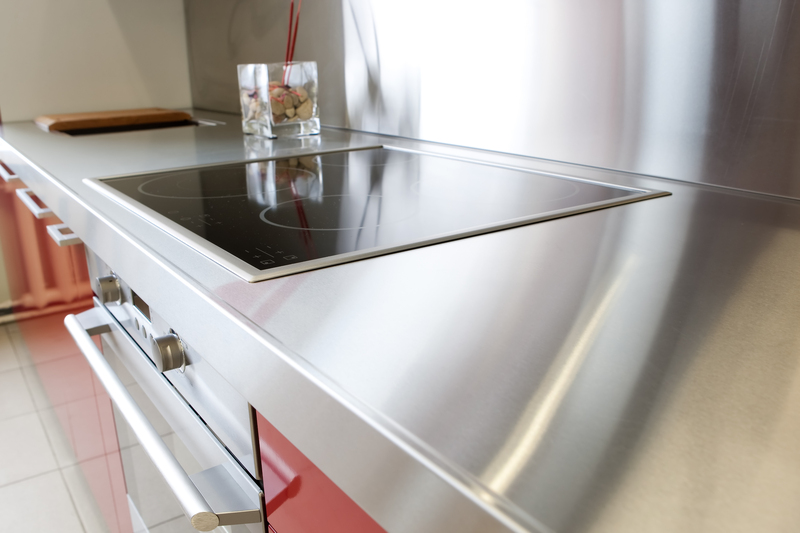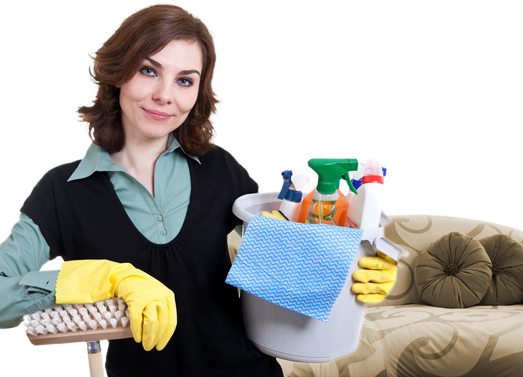Strategies to Keep Bathroom Mold at Bay
Posted on 26/08/2025
Strategies to Keep Bathroom Mold at Bay
Mold in bathrooms is a common and persistent problem that plagues countless homeowners and renters. Spaces prone to high humidity and frequent moisture provide an ideal environment for mold growth. Not only is mold unsightly, but it can also trigger allergies and respiratory problems, raising health concerns. In this comprehensive article, we'll dive deep into the most effective strategies for keeping bathroom mold at bay, ensuring your space stays clean, safe, and fresh.
Understanding Why Bathrooms are Susceptible to Mold Growth
The bathroom is a haven for mold because it offers everything mold spores need to thrive: moisture, warmth, and organic material. Steam from hot showers or baths significantly increases humidity levels, and water splashing outside the tub or sink can seep into crevices and encourage the growth of mold in hidden areas. Understanding these conditions is crucial in designing effective anti-mold strategies.
The Dangers of Mold in Bathrooms
- Health risks: Prolonged exposure to mold can cause allergies, asthma, and other respiratory problems.
- Structural damage: Mold can degrade walls, ceilings, tiles, and grout over time.
- Unpleasant odors: Mold emits a musty scent, making your bathroom less inviting.

Most Effective Strategies to Prevent Bathroom Mold Growth
To keep bathroom mold at bay, adopting a combination of prevention tactics and regular maintenance is essential. Here are the top strategies homeowners and renters can deploy:
1. Maximize Bathroom Ventilation
- Use exhaust fans: An exhaust fan is one of the most effective tools in controlling humidity. Turn on the fan while showering and allow it to run for at least 15-20 minutes afterward to remove lingering moisture.
- Open windows: If your bathroom has windows, open them during and after showers to quickly reduce humidity levels.
- Install a door vent: For bathrooms without windows, consider adding a vent to the door to enhance airflow and discourage mold.
2. Reduce and Control Humidity Levels
Keeping humidity below 50% is optimal to deter mold spores from settling. Here's how to achieve that:
- Use a dehumidifier: Standalone dehumidifiers can efficiently remove excess moisture from the air in particularly humid bathrooms.
- Wipe down surfaces: After bathing, use a squeegee or clean towel to dry tiles, shower doors, and countertops.
- Hang up towels: Never leave wet towels or bathmats wadded up, as they can be prime breeding grounds for mold.
3. Seal and Maintain Grout and Caulk
Grout and caulk are porous and can absorb moisture, which makes them vulnerable to mold infestations. Regular maintenance helps prevent this:
- Seal grout regularly: Apply grout sealer every 12-18 months to create a protective barrier against moisture.
- Repair damaged grout and caulk: Cracks or gaps provide entry points for water and mold. Address these promptly by removing deteriorated material and reapplying new grout or caulk.
4. Choose Mold-Resistant Products
Modern innovations make it easier than ever to keep mold at bay in the bathroom:
- Opt for mold-resistant paint: These specialized paints contain treatments that hinder mold growth and are ideal for bathrooms.
- Install mold-resistant drywall: Such as green board or cement board, behind tiles in high-moisture areas.
- Select mold-resistant shower curtains: Many curtains are labeled "mildew resistant" and are less likely to harbor mold spores.
5. Regular Deep Cleaning Routines
A regular cleaning schedule is among the best ways to prevent mold in bathrooms:
- Use appropriate cleaners: Clean tiles, grout, and fixtures weekly with solutions containing bleach, hydrogen peroxide, or vinegar.
- Scrub corners and niches: Pay special attention to areas around faucets and soap dishes, as these spots often retain water and accumulate soap scum.
- Wash shower curtains and bath mats: Fabric items should be laundered frequently to prevent mold or mildew from forming.
6. Minimize Clutter
Reducing the number of products stored in your bathroom--particularly on shower ledges and in niches--can help keep surfaces mold-free:
- Store toiletries in baskets: This facilitates easy cleaning and reduces the surface area for mold to grow.
- Remove unused products: Don't let old bottles or sponges accumulate, as they can collect water and encourage mold formation.
7. Address Leaks and Water Damage Immediately
Leaking pipes, toilets, or faucets can introduce continuous moisture--an open invitation for mold:
- Check under sinks: Inspect cabinetry and plumbing for leaks or dampness regularly.
- Investigate wall and ceiling stains: These can indicate hidden water leaks and should be addressed by a professional promptly.
Best Cleaning Products for Fighting Bathroom Mold
Arming yourself with the right anti-mold cleaning solutions is essential. Here are some of the best options for bathroom mold removal and prevention:
*Store-Bought Cleaning Solutions*
- Mold and mildew removers: Commercially available sprays are formulated to kill spores and inhibit future growth.
- Bleach-based products: Effective for disinfecting hard surfaces, but should be used in well-ventilated areas and with caution.
*DIY and Natural Solutions*
- Vinegar: Distilled white vinegar kills up to 82% of mold species. Spray undiluted vinegar onto surfaces, let sit for an hour, then scrub and rinse.
- Baking soda: Mix with water to create a gentle abrasive scrub that also deodorizes.
- Tea tree oil: Mix a teaspoon of tea tree oil with a cup of water and spray on affected areas for a natural anti-fungal effect.
Warning Signs: When to Call a Professional
While most cases of bathroom mold can be handled with regular care, some situations require expert intervention:
- Persistent odors: If your bathroom smells musty no matter how often you clean, mold may be growing in hidden spots such as behind walls or under flooring.
- Large infestations: If mold covers an area larger than 10 square feet, professional remediation is recommended.
- Health symptoms worsen: Unexplained respiratory problems, headaches, or allergies that improve when you leave the house could indicate a significant mold problem.
Long-Term Prevention: Renovation and Upgrades
For those undertaking renovations or upgrades, consider these long-term preventative measures to keep mold away from your bathroom:
- Install adequate ventilation: Consider upgrading to a higher-capacity exhaust fan with a humidity sensor.
- Improve insulation: Insulate pipes and exterior walls to reduce condensation.
- Upgrade to waterproof materials: Tiles, solid-surface shower panels, and mold-resistant drywall are wise investments that pay off.
Mold Prevention Tips for Every Bathroom
- Shower with the door open: Leave the bathroom door ajar during and after showers to enhance airflow.
- Regularly inspect hidden places: Check behind the toilet, under the sink, and inside exhaust fans for early signs of mold.
- Keep it light: Mold dislikes natural sunlight. If you have a window, let daylight in as often as possible.
- Avoid carpets: Don't install carpeting in bathrooms, as they trap moisture and foster mold colonies.

Frequently Asked Questions About Bathroom Mold Prevention
How often should I clean my bathroom to prevent mold?
Weekly cleaning of tiles, grout, and fixtures is recommended, along with prompt removal of standing water and regular deep cleaning of less accessible areas.
Are there any home remedies for removing minor bathroom mold?
Yes, vinegar, baking soda, and tea tree oil are safe and effective DIY options for small-scale mold removal and can help keep bathroom mold at bay with regular use.
How do I know if it's time to replace caulk or grout?
If you notice cracks, discoloration, persistent mold, or water stains, it's time to remove and replace affected materials to prevent further mold growth.
Conclusion: Achieving a Mold-Free Bathroom
Keeping bathroom mold at bay requires a combination of good ventilation, regular maintenance, prompt attention to leaks, and the use of mold-resistant products. By following the strategies outlined in this article, you can protect your bathroom from mold, safeguard your health, and maintain a clean, inviting space. Consistency is key: remember that the battle against mold is ongoing, but with vigilance and the right steps, your bathroom can stay fresh and mold-free for years to come.
Want more tips on home maintenance and bathroom care? Stay tuned to our site for expert advice and practical solutions for every homeowner.




